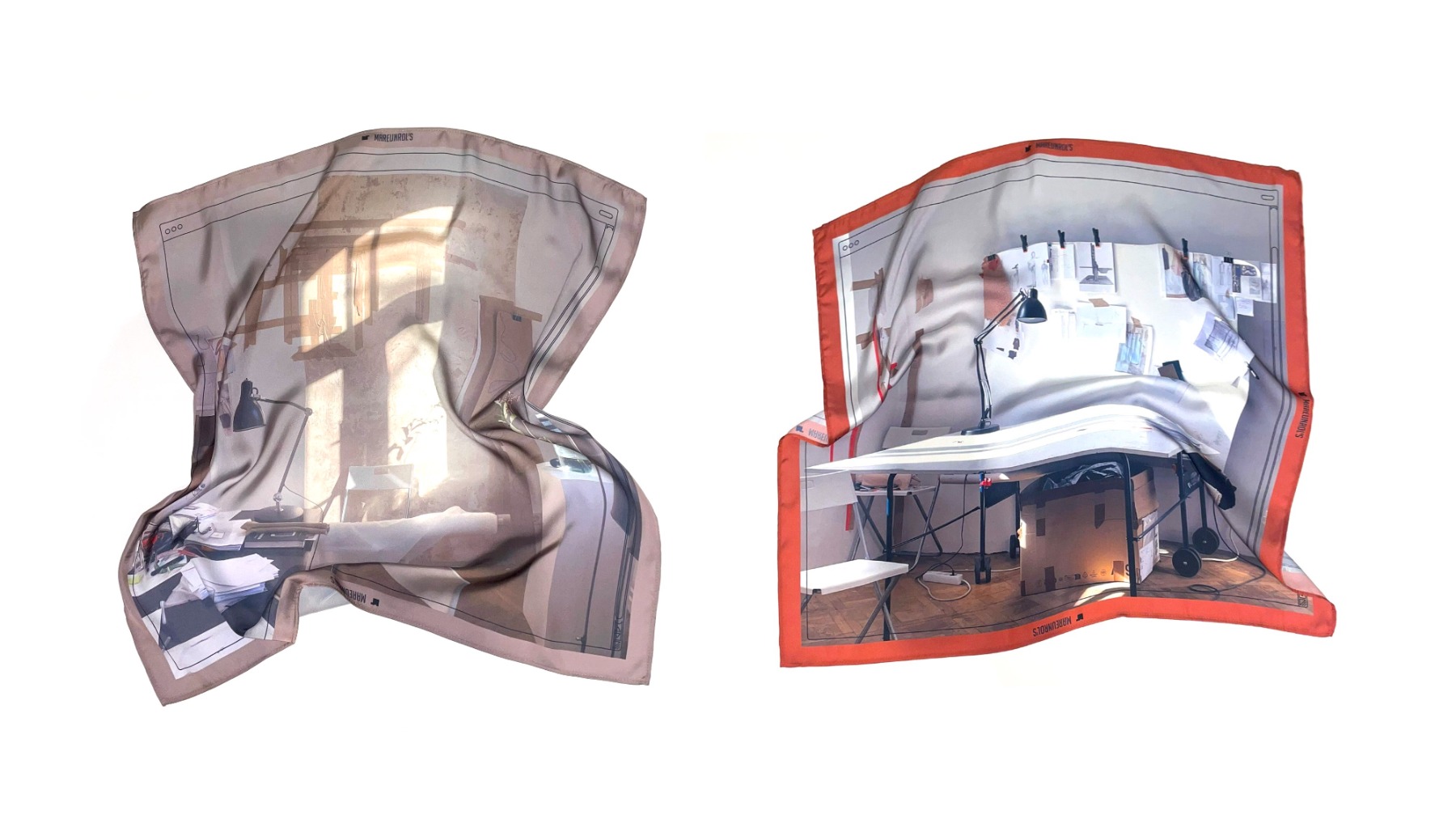
Exercises are a choreography in action
Photoreport / MAREUNROL’S solo exhibition “Fieldwork: Invisible exercises” at the Riga Art Space on view till December 29
Exhibition “Fieldwork: Invisible exercises” by the contemporary fashion and art duo MAREUNROL’S is the most ambitious representation of the artists’ visual works to date, in which art is highlighted as a sensory space - the means of visual expression, subject to the concept created by the artists, are the most powerful tools for conveying the truth.
The exhibition consists of artworks in different media and the entire space is permeated by out-of-sync sound installations that seek to disrupt the harmony that otherwise exists between the works. The exhibition is conceptualised as a journey through several stages/ideas that symbolise MAREUNROL’S current visual practice – the two entrances to the environment created by the two artists mark the beginning of the cycle and the associated acceptance of choice; nature in contact with the turbulence of the urban environment creates a moving picture landscape in which the human is a sculptural work of art. Meditation on creation motivates us to contemplate the principles of truth and to seek the beautiful, but it can often lead to creative burnout. This is followed by elation, exhaustion, a yearning for the unknown. The exhibition is a visual diary of the artists' work, which makes us aware in the most direct way of the processuality of art making – the invisible exercises of mind and practice. The passage of light leads to the end, or the beginning of another cycle. Movement and further exercise are inevitable.
Exhibition curator: Auguste Petre.
***
“Exercises are a choreography in action.
Movement in a metaphysical space where means of visual expression (dependent on the concept created by the artists) are the most effective instrument for revealing a truth that is able to pierce through stereotypes and superficial, automatically generated ideas. Well then, these exercises are an integral part of the artists daily routine. Wherever the works are directed, they reflect on already existing contexts and the accomplishment of subjective goals. Usually, these exercises are invisible, and sometimes you even have to perform ostentatious theatre for them to be noticed. But essentially, they are instruments that motivate self-prosperity.
Art is a sensory space in which context is created through a continuous search for the beautiful. Turbulence is a condition that is irregular both in time and space. It allows its creator to be a part of the process and take an observational position at the same time. Searching through the unknown, the cyclicality of any action and perception of things is being revealed; as well as the sincere, existent, valuable. Beauty is equal to being aware of the existence of a new path. Move, solve, analyse. Create if you can. Each new process is a result of the experience gained at the previous phase, however, the possibility of repetition is impossible.
The two entrances to the environment created by both artists represent the beginning of a cycle and the acceptance of choices that come with it; nature in contact with the turbulence of the urban environment creates a landscape of moving pictures, in which a person is a sculpturally created work of art. Meditation on creation motivates you to ponder the principles of truth and search for the beautiful, but it can often lead to a creative burnout. It is followed by an uplift, weariness, pursuit of the unknown. The exhibition is a visual diary of everyday work, which, in the most direct way, allows one to become aware of the process that is specific to the creation of art – the invisible exercises of the mind and praxis.
A passage of light leads to the conclusion. Or, is it the beginning of a new cycle?
Movement and further exercising is inevitable.”
Arterritory.com presents a photo report from the exhibition.
Photo: Kristīne Madjare





























Photo: Māris Ločmelis
Photo: Māris Ločmelis
Photo: Māris Ločmelis
Photo: Māris Ločmelis
Photo: Māris Ločmelis
Photo: Māris Ločmelis


